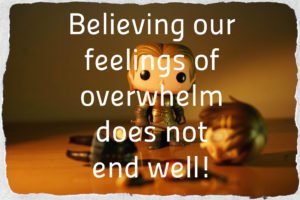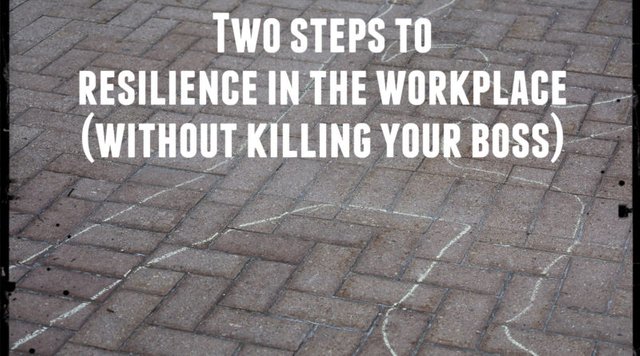Two steps you can take now to develop resilience in the workplace
Here are two steps to take to develop your workplace resilience right now
Stress, we know so much about it but…
One of the confusing things for me about this so called ‘information age’ is that we have an abundance of information but do very little of use with it. Here is another ‘stress in the workplace’ study, this one from Canada. What a surprise, work is stressful! Who could have known? The title of this article goes further and is, ‘workplace stress a main cause of mental health issues…’
Reconceptualising the problem
We tend to look in one of two directions to try and understand or situation. One is to look at the world, the environment as the source of a problem. It’s straightforward and common sense. Of course a toxic environment is harmful. All we need to do is identify the toxic elements and remove them.Job done, business as normal. A cursory glance at the stress statistics over the last few years, and on a wider scale, the environmental problems faced by the world (still) will demonstrate that common sense has little bearing on what happens in the world.
The other way, is to see it all as psychological. This is a time honoured method from the Stoics up to the modern cognitive approaches to Psychology. Once again, despite having more approaches to mental wellbeing than ever before, they have gained little traction on the viral spread of mental health problems experienced by so many. All these psychological and therapeutic approaches sound completely wonderful yet seem to have very little overall impact.
I would suggest the reason for this is because we are not only separate beings living through an intellectual / cognitive experience of the world (although in one sense being ‘stuck in our heads’ is one source of the problem) we are beings who are a part of, not separate from the environment within which we experience ourselves.
Workplace stress is a problem both of the environment we create and how we psychologically respond to and within that environment. Workplace stress is a matter of how we receive the environment that we find ourselves within with varying degrees of willingness and varying degrees of ability to affect.
Solving the problem
Given that we and our environment are a totality the solution to workplace stress needs to come from an acknowledgement and understanding of that totality. One way of thinking about this is to go from ‘outside to inside and then inside to outside’ (and repeat).
This is what I mean Toxic elements/managers/work practices in the workplace need to be directly addressed. This is as much about organisational culture as anything. If there is willingness on an organisational level, much can be achieved. As an employee you and I may need to look carefully at different areas within our organisations and attempt to place ourselves as best we can if we are unable to leave for a more aware employer and workplace.
This is not an easy counsel given the craving for profit that drives some companies and the fear of losing a job that s so easy to use as social control. It is also only an aspect of the solution. The rationale is to get ourselves in as best an environment as possible in order to take as much off our minds as possible. If we can stop having to deal with (more of) what should not have to be dealt with, we can get the mental space, to get the mental space, if you see what I mean.
When you are overwhelmed it is difficult to take a step back. 
The aim is to be able to take enough off our plate so we can begin to take the mental space in order to be present with our thoughts and feelings without becoming lost in them. When we become lost in our feelings we tend to mistake the intensity of feeling for an imperative to change the world (which may need changing) rather than as a quality of the feeling and thinking going through us. In many work situations we will be unable to change what we desperately want to change and so add the feelings of frustration to our unhappy lot.
This is where approaches such as mindfulness, acceptance and commitment therapy, self-hypnosis, to name a few, can be so helpful. We can learn techniques with which to receive our mental activity (I include feelings as well as thoughts in this activity) rather than being driven potty by it.
The capacity to receive our mental activity as no more than mental activity begins to remove the repetitive power that keeps the stress cycle going. As we become more comfortable with our own uncomfortable experience we become less stressed by our own feelings of being stressed and under pressure. It takes work to cultivate this presence of mind and to nurture it sufficiently to be of use against life’s hard edges. Better to start…
How to start in two steps
- If you are overwhelmed do what you need to do to get yourself in as good a position at work as you can. If you cannot move within the dysfunctional environment, arrange your daily routine to have some clear time that you can have for you. Choose a structured approach to developing ‘presence’ with regard to your thinking and feeling (as opposed to complete identification with it and consequent overwhelm). For example get yourself on an 8 week mindfulness based stress management course and build a daily practice into your life.
- Start to move away from seeing your life as work centred. This is our current society’s sickness. It does not need to be ours. Work does not need to be the most important part of life. Society as a whole has been brainwashed by the political and business interests who want to both control us and profit from us.
The beginning of joined up stress management is to decide how we want to live, and take the first step to making that happen, it is not just going on the mindfulness course and learning to cope better with a dysfunctional environment. It is creating a more functional and fulfilling lifestyle deliberately. Please leave your comments below and be part of the conversation in the Facebook group
What did you take from this article? What would you also want to know about?
